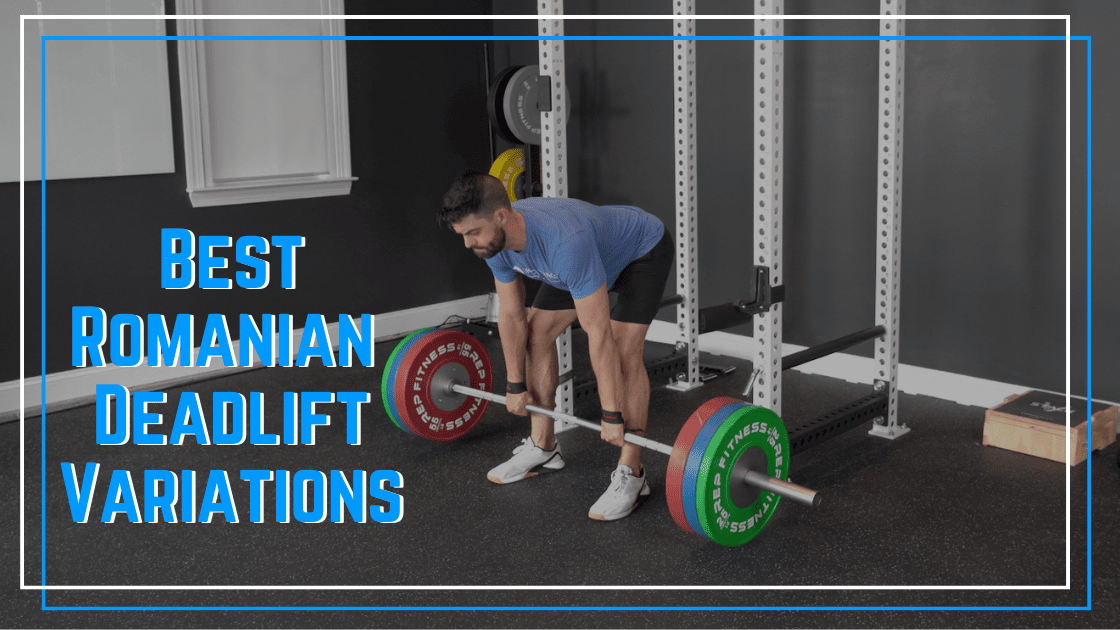Romanian Deadlift Variations
The Romanian Deadlift is one of the best exercises for building posterior chain strength. This exercise will build stronger erector spinae, glutes, and hamstrings. But having variations of this great movement will give you multiple ways to continue progress by slightly varying the stimulus imposed as you change variations.
Romanian Deadlift
Start with a narrow stance and hands just outside of the legs. From the top, you’ll have soft knees that stay slightly bent. Initiate the descent by pushing your hips back as the barbell slides down your thigh with a flat back. Lower until a stretch is felt in the hamstrings, and then return upright.
Sumo RDL
The Sumo Romanian Deadlift is an excellent Romanian Deadlift variation to strengthen the posterior chain muscles. The wide stance often results in athletes reporting a deeper stretch in the hamstrings and more workload being felt in the adductors while keeping glute work high. I’m not aware of any research showing drastically different muscle activation levels with the Sumo RDL. Still, I like it as a simple way to change loading a bilateral hinge pattern from the traditional narrow stance Romanian Deadlift.
This variation is also significant for athletes with Sciatic nerve tension as the wide stance challenges neural mobility less, meaning some athletes with back pain may tolerate this RDL variation better.
Snatch Grip RDL
The Snatch Grip RDL has an identical technique as the standard RDL, but the wide grip adds two critical areas of emphasis. First, the wide grip allows an athlete to train through more range of motion. Second, the wide grip significantly challenges the lats and upper back muscles. This will place slightly less emphasis on the lower body, as upper body strength tends to be the limiting factor with the Snatch Grip RDL. Consider lifting straps to not let your grip give out before other muscle groups are sufficiently challenged.
Hand-Supported Single Leg Deadlift
The Single Leg Deadlift is an excellent Romanian Deadlift variation that is unilaterally loaded. The negative of this exercise is that the reduced stability when standing on one leg can result in less work on the hamstrings and glutes themselves. If our goal is maximum stimulus on the muscle, we want to reduce the instability of a movement. Enter the Hand Supported Single Leg Deadlift, where the athlete holds a squat rack upright with the working side hand to reduce the balance demands of the SLDL.
B Stance RDL
The B Stance Romanian Deadlift takes the Single Leg Deadlift and adds stability to the exercise by lightly touching the back foot to the ground. Reducing instability allows for increased loading and emphasis on developing glute and hamstring strength compared to the SLDL.
Rear Foot Elevated RDL
The Rear Foot Elevated RDL is a glute crusher! This variation of the single-leg deadlift reduces the balance demands of the SLDL, with the back leg assisting with support. It allows for heavy loading that emphasizes the glutes over the erectors or hamstrings more than other RDL variations.
RDL with Rotation
The RDL with Rotation takes the B-stance Romanian Deadlift to the next level with increased glute work and more hip mobility opening. The rotation of this variation creates an excellent glute stretch and workload with a lighter weight than the B-Stance RDL. Rotating also makes this a wonderful variation for athletes needing to open up their hip mobility.
Band Resisted RDL
The Band Resisted Romanian Deadlift is a variation of the RDL that emphasizes the glute max more as the band resists full hip extension. This exercise is great for anyone needing extra targeted glute work or those wanting to train the hinge pattern while recovering from low back pain. Since the band goes around the hips, it only loads the lower body, not the back, allowing for higher-intensity work with less spinal loading.
RDL with Lat Engagement
Our final variation is the Romanian Deadlift with Lat Engagement. This variation uses a resistance band that pulls the barbell away from the body. The lats much keep the bar close to the body in many lifts, and this variation is a great one for coaching better engagement of this muscle group.






